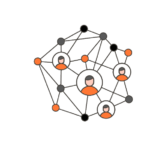
Navigating Challenges: Being a good Technical Lead. Part 3.
Kristijan Pušić | May 26th, 2024
In the previous two articles on the subject of technical leads and the skills required for the role, we discussed mentorship and leadership. These two skills represent two out of five key areas that shape the work life of the technical lead. In this article, I will attempt to elucidate the third skill, which is called onboarding. This can be onboarding for a specific project or onboarding within an organization for new software developers.
Project onboarding focuses on how effectively a technical lead can integrate new team members into the project.
It is the responsibility of the technical lead to ensure that a new developer is adequately informed of both the technical aspects and the broader business objectives. It is also important to assess the technical lead’s ability to communicate project details. Furthermore, the technical lead must introduce new hires to team dynamics and facilitate their rapid and effective contribution to the project. This is a challenging task, but with proper experience you can do it. Let’s see the levels for the onboarding skill of the technical lead:
Onboarding Level 1: Junior
Juniors focus on providing newcomers with essential project information, detailing the architectural framework and team processes. They believe this foundational knowledge is adequate to get started and help new colleagues adapt to the team environment quickly.
Onboarding Level 2: Middle
At this stage, you dig a bit deeper, offering detailed explanations of each architectural block. As a middle technical lead, you will aim to give new team members a comprehensive understanding of the project mechanics, facilitating smoother integration and highlighting the importance of detailed task reviews.
Onboarding Level 3: Middle+
Employees here take a holistic approach, introducing newcomers to both the technical and business aspects of the project. You will need to actively involve new hires in discussions about current and upcoming tasks, fostering a deeper engagement and quicker assimilation into the project dynamics.
Onboarding Level 4: Senior
Seniors provide in-depth insights into the project’s alignment with business needs. As a senior technical lead, you will ensure newcomers understand their roles across different areas, not just their specific expertise. This level emphasizes the importance of integrating new team members with other specialists and establishing strong team connections to expedite the onboarding process.
Onboarding Level 5: Architect
Architects offer a comprehensive overview of the project and its business implications. They stress the importance of involving new hires in diverse roles, including interactions with stakeholders outside the immediate team. Your focus as an architect is on establishing robust feedback mechanisms and team relationships. It significantly enhances the overall onboarding experience and integration into the company culture.
To measure the effectiveness of onboarding, technical leads can use performance metrics related to the speed at which new hires reach productivity, as well as feedback from newcomers and team members about the onboarding experience. Surveys and regular check-ins can provide qualitative data that helps in assessing how well new employees are integrating and understanding their roles.
Onboarding competency is crucial for maintaining team efficiency and project momentum during transitions.
Transitions in IT projects and companies can vary considerably depending on a number of factors, including project scope, company size, and the specific industry sector. However, in general, IT projects often experience frequent changes due to evolving technologies, shifting project requirements, and dynamic team compositions. This fluidity necessitates regular updates to team roles and project alignments, making efficient onboarding processes crucial for maintaining productivity and meeting project timelines. In many agile environments, transitions can occur as often as every few weeks or months, particularly when new phases of a project begin or when scaling up operations.
Gathering feedback from new developers is important to be able to continuously improve onboarding strategies and team integration.
This continuous feedback loop is of significant importance for the overall company culture, extending beyond the onboarding process. Organizational culture plays a pivotal role in the onboarding process, as it directly influences how new hires perceive their workplace and their comfort level in adapting to team dynamics. A welcoming and inclusive culture can significantly facilitate the transition, assist new hires in assimilating more rapidly, and foster a sense of belonging, which can boost overall productivity and job satisfaction. Promoters of this are technical leads, who represent the core of company culture.
FAQ
Can technology enhance the onboarding process for technical leads and their teams?
Yes, technology can significantly enhance the onboarding process by providing platforms for training, communication, and collaboration that help streamline the integration of new hires. Tools like digital onboarding portals, project management software, and virtual reality simulations can provide interactive and engaging ways for new employees to learn about their roles and the company culture efficiently.
How do you measure the effectiveness of onboarding programs?
The effectiveness of onboarding programs can be measured through various metrics such as the time it takes for new hires to reach productivity, employee satisfaction scores, retention rates, and the feedback from regular performance evaluations. Implementing surveys and feedback forms at the end of the onboarding period can also provide direct insights into the areas that are working well and those that need improvement.
Can onboarding processes be adapted for remote teams, and if so, how?
Yes, onboarding processes can be effectively adapted for remote teams by utilizing digital tools to replicate the in-person experience. This includes virtual tours of the office, digital meet-and-greets with team members, online training sessions, and regular check-ins via video calls. Cloud-based platforms can be used to share documents and resources, while maintaining regular communication is key to ensuring new hires feel integrated and valued in the team.
Related posts
- Navigating Challenges: Being a Good Technical Lead, part 5In previous articles, I have explained four essential skills for Technical Leads, they were leadership, mentorship, onboarding, and hiring.
- How to Efficiently Scale Your Startup’s Tech Stack for Maximum GrowthWhen scaling your IT startup, choosing the right tech stack is crucial to ensure efficiency, flexibility, and long-term growth.
- 9 Key Measures to Protect Digital Assets and Ensure Data IntegrityDigital transformation represents a significant shift in the way an IT company operates, impacting every aspect of the IT business from operations to customer engagement.
- 8 Cloud Transformation Strategies for Large EnterprisesMigrating legacy systems to the cloud is a critical move for large enterprises aiming to enhance flexibility, scalability, and efficiency of their software solutions.
- 7 Ways to Become A Better Software Engineer MentorContinuous learning and mentorship in IT has always been a cornerstone of a software developer’s career.
- 6 Tips for Building Effective Mentorship Relationships in Software EngineeringMentorship can be either formal or informal. Formal mentorship takes place within a structured mentoring program inside an IT organization.
Ready to Enrich Your Team?

Kristijan Pušić
IT consultant and Business developer
Our consultant is at your disposal from 9 AM to 5 PM CET working days from Monday to Friday for any additional questions.
Recent Posts
- How Brands Use AI to Track, Trace and Prove Their Sustainability Claims
- How AI Recognizes Waste: Smart Recycling Technologies in Action
- Rapid Hypothesis Testing for Driver Retention in Delivery Service
- How Setronica Created an AI Slack Bot, Part 3: Putting Our Bot to Work
- Building a Reliable Monthly Accrual Report: Overcoming Challenges and Implementing Solutions






